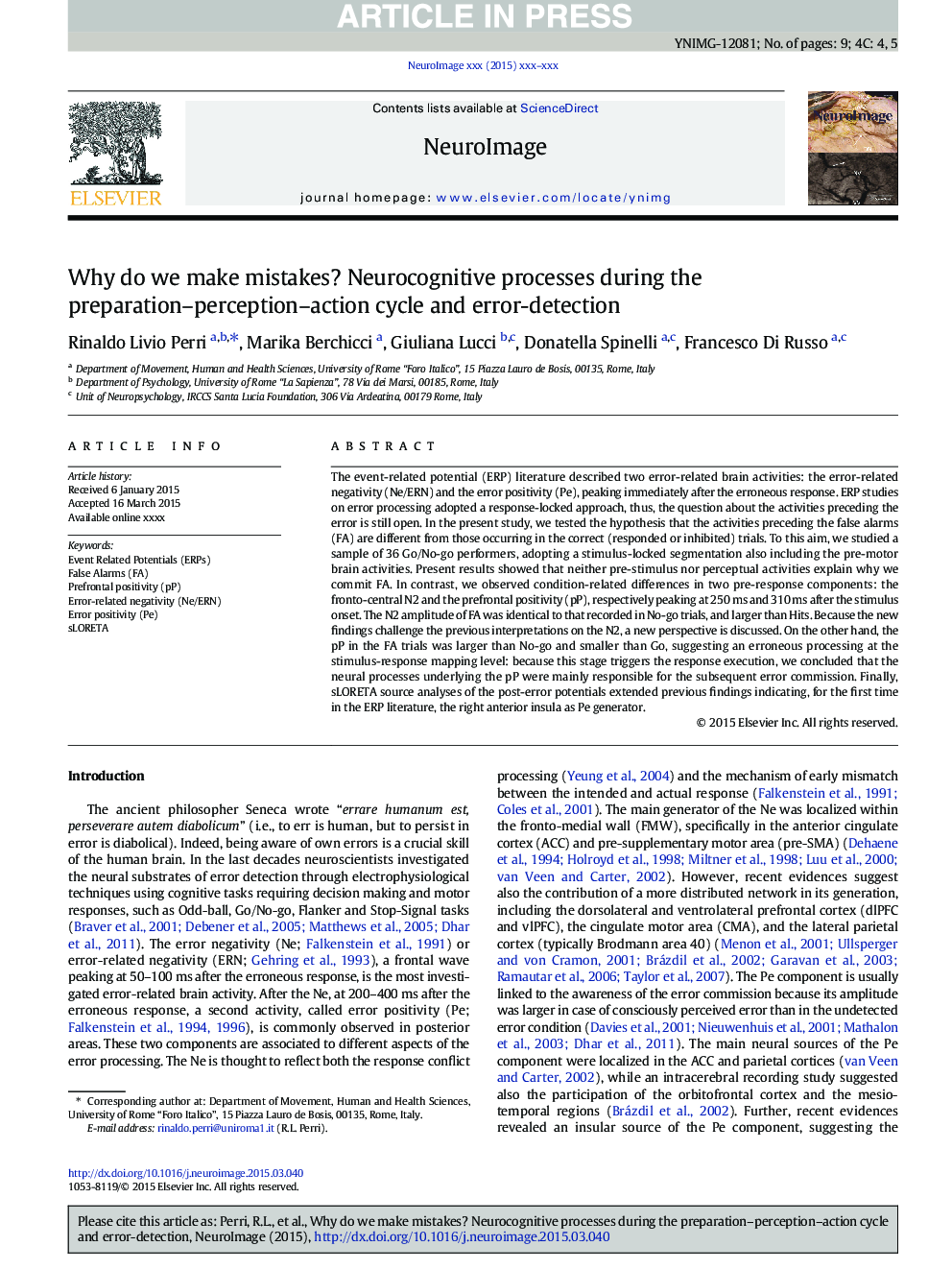| Article ID | Journal | Published Year | Pages | File Type |
|---|---|---|---|---|
| 6025271 | NeuroImage | 2015 | 9 Pages |
Abstract
The event-related potential (ERP) literature described two error-related brain activities: the error-related negativity (Ne/ERN) and the error positivity (Pe), peaking immediately after the erroneous response. ERP studies on error processing adopted a response-locked approach, thus, the question about the activities preceding the error is still open. In the present study, we tested the hypothesis that the activities preceding the false alarms (FA) are different from those occurring in the correct (responded or inhibited) trials. To this aim, we studied a sample of 36 Go/No-go performers, adopting a stimulus-locked segmentation also including the pre-motor brain activities. Present results showed that neither pre-stimulus nor perceptual activities explain why we commit FA. In contrast, we observed condition-related differences in two pre-response components: the fronto-central N2 and the prefrontal positivity (pP), respectively peaking at 250Â ms and 310Â ms after the stimulus onset. The N2 amplitude of FA was identical to that recorded in No-go trials, and larger than Hits. Because the new findings challenge the previous interpretations on the N2, a new perspective is discussed. On the other hand, the pP in the FA trials was larger than No-go and smaller than Go, suggesting an erroneous processing at the stimulus-response mapping level: because this stage triggers the response execution, we concluded that the neural processes underlying the pP were mainly responsible for the subsequent error commission. Finally, sLORETA source analyses of the post-error potentials extended previous findings indicating, for the first time in the ERP literature, the right anterior insula as Pe generator.
Related Topics
Life Sciences
Neuroscience
Cognitive Neuroscience
Authors
Rinaldo Livio Perri, Marika Berchicci, Giuliana Lucci, Donatella Spinelli, Francesco Di Russo,
